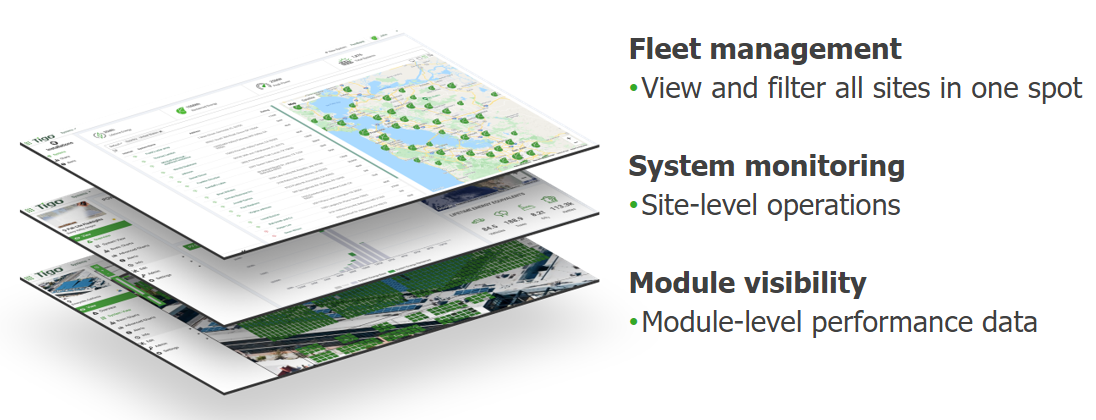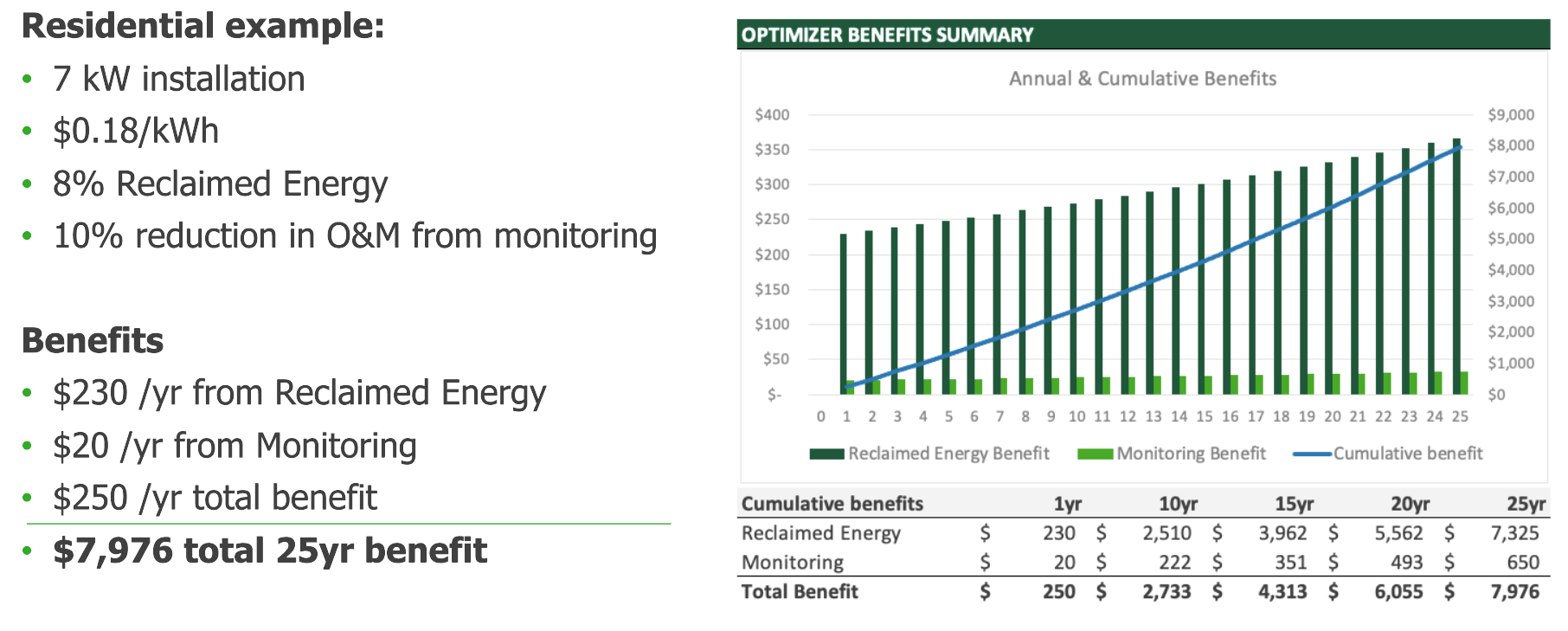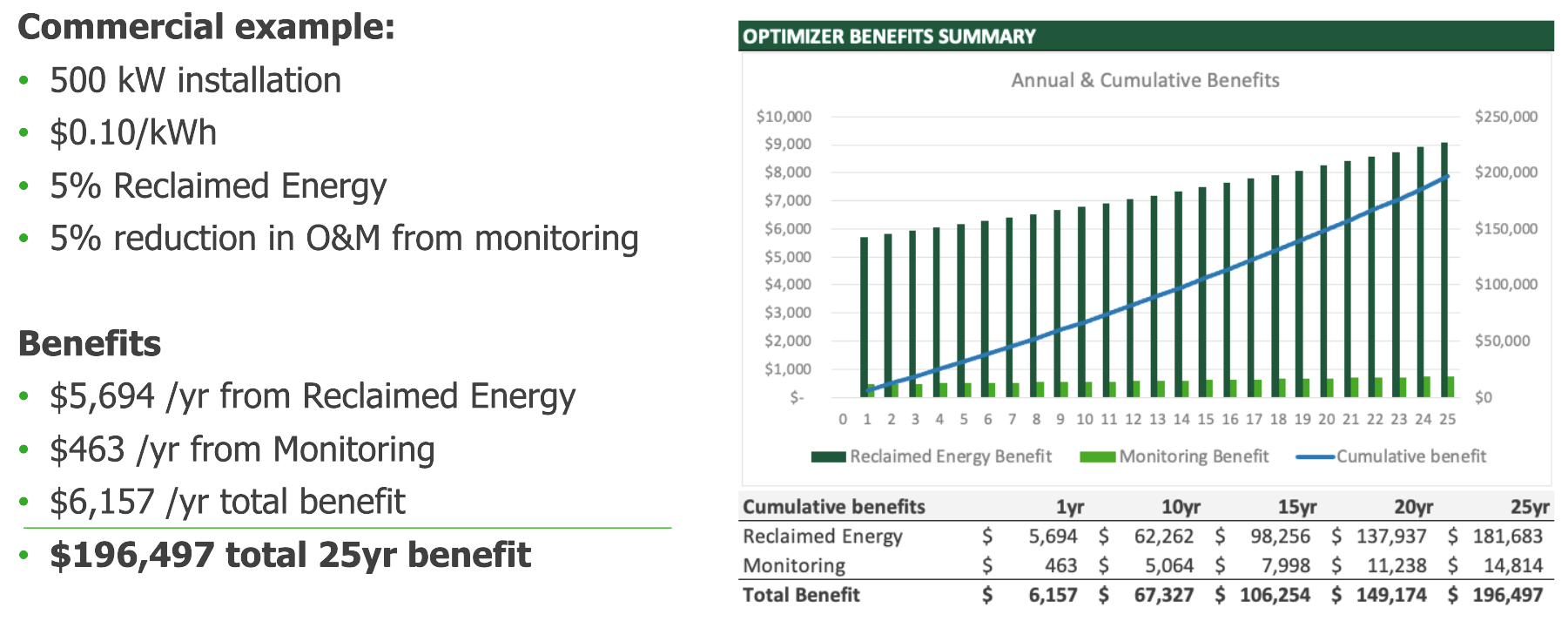Blog
February 2, 2022
Maximize Solar Production and ROI with Tigo Optimizers

In this webinar, we are going to walk you through the benefits of optimization along with some examples.
Why use solar optimizers?
So many things can affect PV modules performance. Some designers or installers have some control over say structural shade or mix orientations. Others like mismatch and uneven module degradation, there's little to be done with that. In fact, if you do not have module level monitoring, you may not even know the extent of the mismatch or degradation and how it's affecting the performance. And obviously soiling and weather can have a negative impact on our arrays as well.
What do optimizers do?
Let's talk about what optimizers enable. They enable:
- More power production per given area (that's your Watts per meter squared),
- The placement of modules in areas where there are some shading, and
- The TS4-A-O enables module level visibility.
Module level visibility allows you to identify issues quickly and efficiently. You can send trucks out with the right tools the first time and reduce truck rolls by taking care of multiple potential issues at onetime because now you have the visibility to identify potential problems before they become problems, such as failed diodes.
Overall optimizers enable projects to happen which might not have originally and enable a higher return on investment.
Benefits of Monitoring

Visibility is more than just monitoring. Yes, Tigo offers monitoring, but there are different “views” of Tigo’s Energy Intelligence (EI) platform. The top level is our fleet management view (see Figure 1). Here, you can see all your systems in one place, filter, sort, and search on almost any variable. Maybe you need to deploy a firmware fix to a site with an inverter – we'll call it inverter A – search it, create a group, see where the sites are physically located on the map, and optimize maintenance activities by neighborhoods, zip codes, city, however.
The next level of visibility is site level. Enter any one of your sites to see specific information, production, currently this oracle. Then the most granular of the views is module level. In each site on the EI platform, you can view the module level details whether you have 3 modules or300,000 new modules, it's all available to you.

In the charts you can see in Figure 2, we have two types of production data reporting. The green tops or tips of every bar, that's Reclaimed Energy. This is energy that would have been lost if optimizers were not installed. The gray underneath those green tips, those are the non-optimized production. Now this can be viewed as the whole system, selected string, or even selected modules.
With Tigo, we will not leave you in the dark. You will know exactly how much energy Tigo reclaims for you each day, month, year, lifetime of the system. Only Tigo offers Reclaimed Energy.
And that's all great if you've installed Tigo, you'll see those benefits immediately, but I'm willing to guess a few of you in attendance may still be on the fence about optimizers. To you, I offer my data.
Reclaimed Energy

We looked at tens of thousands of optimized sites with energy within the Energy Intelligence platform and the breakdown is in Figure 3. But here's what I found incredible:
- 25% of sites produced more than 10% reclaimed energy, that is substantial.
- 76% of the sites reclaimed between 3-15%, and
- on average, sites see 6.6% higher production, and
- Tigo has reclaimed over 75 gigawatt hours of PV for our customers.
We have a few papers that you can reference to get more information on reclaimed energy and optimization. Those links are available in on our website on the downloads page.
Optimizer benefit examples
We have looked at how monitoring could help operation sand management (O&M) activities and how reclaimed energy is reported. And when I put just those two items together to weigh the benefits, it may look something like these examples.
Residential site

Here we have a seven-kilowatt residential site. Let's say the cost of energy is $0.18 a kilowatt hour. The system is expected to reclaim an average of 8%. Now for this site, maybe it was designed with multiple tilts or assets, or maybe there was a little shading. Here we are using a value of 10% for reduction in O&M from monitoring. And this is a value that a customer who uses the monitoring portal for O&M recently reported to us; you may find this value to be greater or a little less than.
What we see is $230 per year extra from the Reclaimed Energy,$20 a year from monitoring the reduction in O&M costs and together that's $250 at the first year and slightly more each year after that for 25-year benefit totaling almost $8,000. And this is just a seven-kilowatt system.
Commercial site

Let's take a look at a commercial example. This is a half megawatt system. We used $0.10 a kilowatt hour on this project and used 5% for both the Reclaimed Energy and the reduction in O&M. So that's $5,694 per year reclaimed, $463 a year saved from monitoring in the O&M production, and that's a total of $6,157 per year. For just 25 years that comes out to just under $200,000.
If you're curious how your project could pencil up, call our sales team. They can calculate out the savings for you based on how you plan to use optimizers and monitoring for your O&M activities.
Tigo TS4 Platform
Coming back to the TS4, the installation cannot be simpler– no ground wire, no mounting hardware are required. Just slide the clips onto the module frame in seconds; it does not need to be over complicated. We estimate it takes 15 seconds to install a TS4 on a PV module. It is so simple, I can argue it could be done even faster, but I mean, 15 seconds is pretty reasonable.
I've also worked on roofs in the summer in Arizona and we always wanted to perform any work on the ground (that allowed it). So, what I would do is mount the TS4 on the frame before taking the modules up to the roof in order to spend less time on the roof, because nobody wants to spend time on the roof in Arizona in the summer.
Another tip: If you have a team staging the trucks each morning with the products that you need that day on the job, consider having the TS4 slid onto the module of frames in the warehouse before they even arrived at the site. You can still stack the modules in the truck with the TS4 attached. Just another way to save money.
“Simpler installation and simpler operation.” I think it's an important fact people do not realize; Tigo optimizers only work when they need to increase the energy output. The rest of the time they are in a passive mode. This allows for an incredible 99.6% efficiency, significantly fewer operating hours, which leads to less wear, less heat, and therefore higher reliability.
Early this year, we had an increase to the allowable input power. This was a product of keeping in sync with our module partners and staying on top of the trends. In 2020, 20 module manufacturers launched modules over 500 Watts at the Shanghai PV Power Expo. And to sync with the market, we updated the TS4 line to 700 Watts, but we continue to watch these and make updates to the product as we see the industry making these types of shifts.
We also have a pretty big list of inverter partners as well (see them all here). With Tigo, we do not force you to use one, two, or three different manufacturers, we work with hundreds of different inverter models. You need to replace an inverter for any reason, you have a lot of options.
Remember Tigo carries a 25-year warranty. You will likely replace an inverter in that time. When it comes time, you'll have a lot of options. If you have to buy a whole new inverter anyways, you should have the options to use the latest and greatest, not just what the manufacturer sticks with.
If your MLPE was tied to only one inverter manufacturer, you run the risk of them exiting the market, not having inverters that could retrofit into 10- to 25-year-old systems, and this just reduces the supply chain risk. Again, it's that simple.
Summary
To summarize, we looked at how Tigo optimizers increase the energy output, enable module level monitoring, and comply with rapid shutdown requirements. I shared some data from our Energy Intelligence portal that shows the average of 6.6% in Reclaimed Energy per site. And we looked at two examples of how reclaimed energy plus monitoring can financially benefit the site.
Finally, we looked at how the TS4-A-O is simple, installs in seconds, requires no ground wires and no mounting hardware. You pick the features you want from the TS4 platform, and you choose the inverter you want to work with.
Before we close out the presentation portion, I want also to let you know about the Tigo Community. There you can see posts from others in the solar community on different topics. Take a look, post your own story, be a part of the community. If you need any information, help, or contacts in general, there are some helpful links. To leave a comment on this blog, click here.









